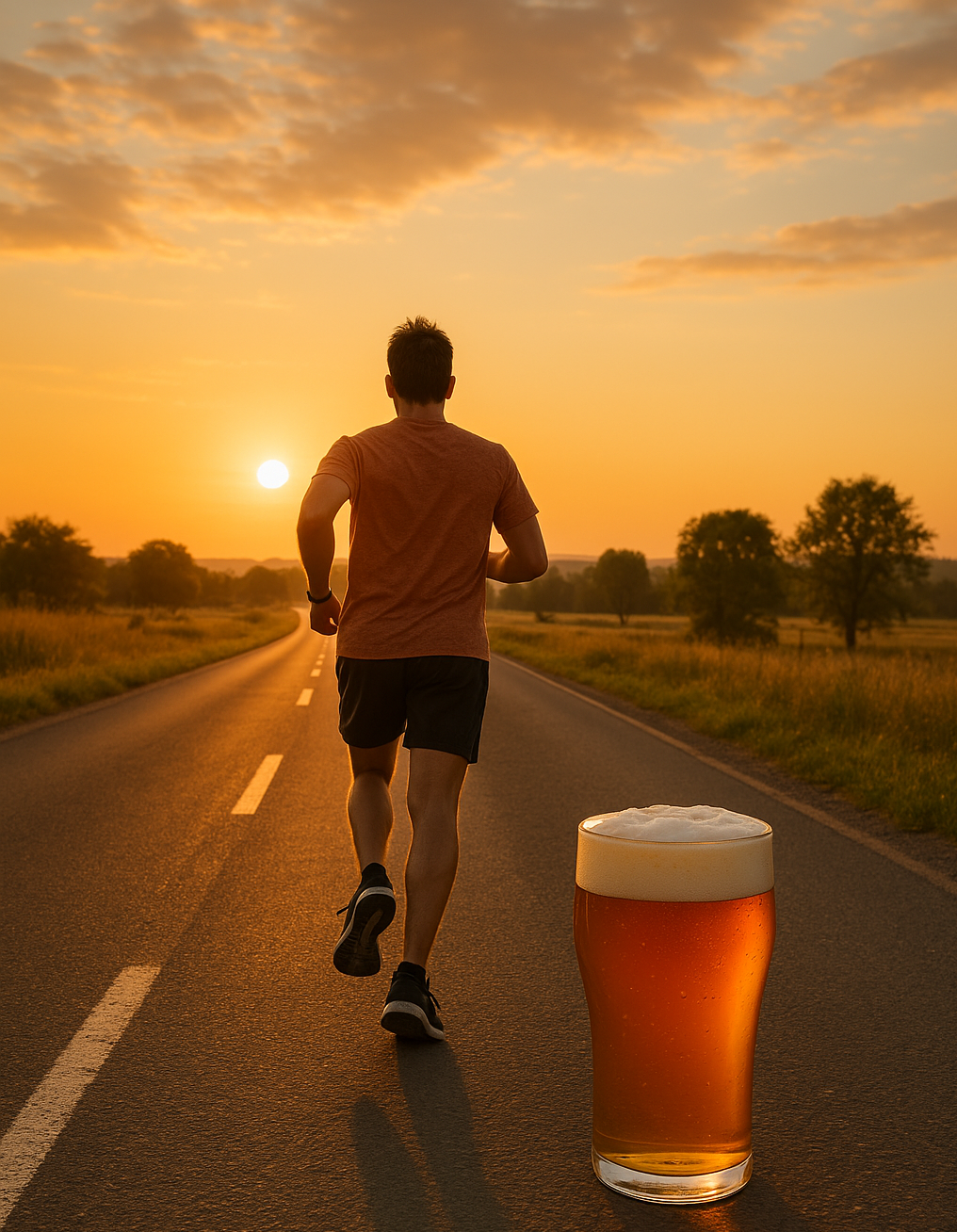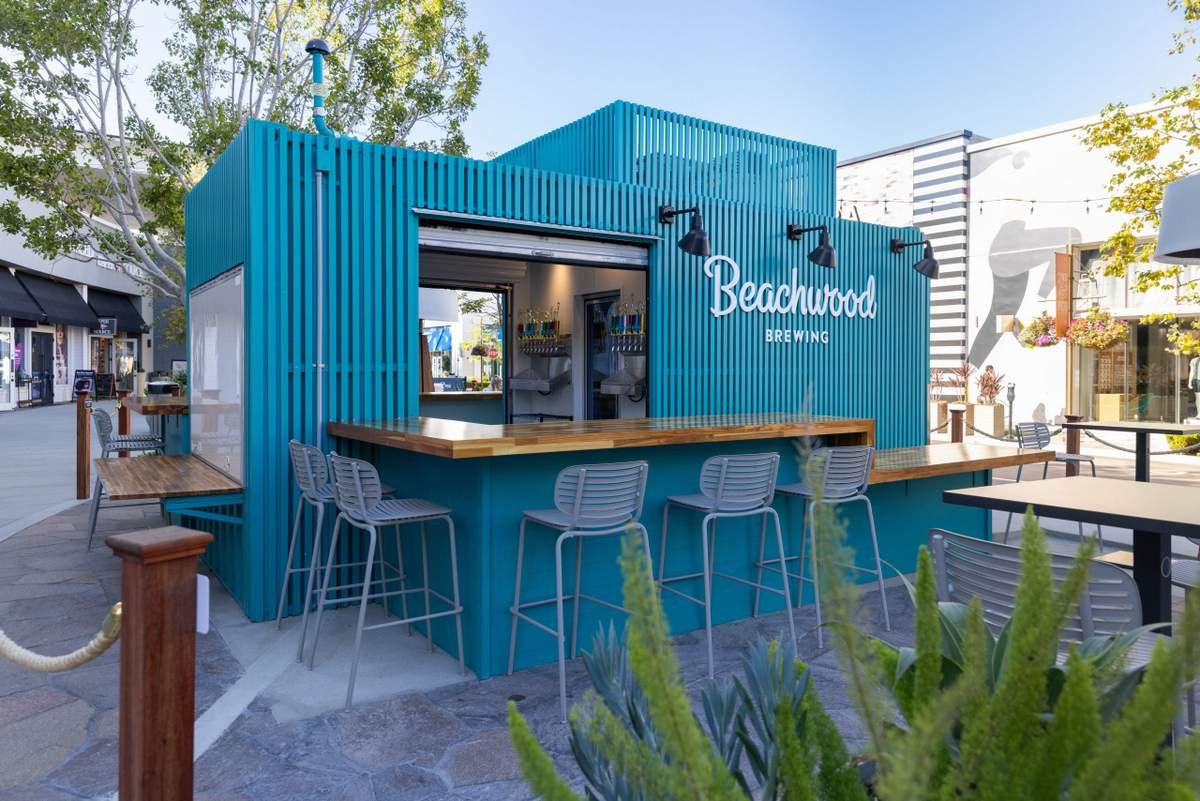The numbers don’t lie: non-alcoholic (NA) beer is having much more than a moment. According to the latest data from NIQ (formerly Nielsen), non-alcoholic beer saw a staggering 26.6% increase in dollar sales and 21.6% growth in volume over the past year. Meanwhile, traditional beer sales declined by 1% in dollars and 3.2% in volume during the same period.
What was once a tiny, often-mocked segment of the beer market has transformed into one of its most dynamic and fastest-growing categories. But what’s driving this remarkable shift? Why are more drinkers than ever reaching for beers without the buzz?
“We’re witnessing a fundamental change in how people think about drinking,” says beverage industry analyst Maria Cortez. “Non-alcoholic beer has shed its stigma and become a legitimate choice rather than a compromise.”
This transformation didn’t happen overnight, nor is it driven by a single factor. Instead, it represents the convergence of several powerful trends that are reshaping not just beer, but our entire relationship with alcohol. For brewers and homebrewers alike, understanding this shift is crucial.
The Numbers Don’t Lie

The growing variety of non-alcoholic craft beers offers flavorful alternatives for mindful drinkers
The growth of non-alcoholic beer is particularly impressive when viewed against the backdrop of the broader beer market. While overall beer sales have been flat or declining for several years, non-alcoholic options continue to surge.
According to data from IWSR, a leading beverage alcohol insight firm, the no- and low-alcohol market is expected to expand by over 4% in volume compound annual growth rate through 2028 across ten key global markets. Non-alcoholic RTDs (ready-to-drink beverages) are predicted to grow at the fastest rate during this period.
This growth isn’t limited to a single demographic. While millennials and Gen Z are often credited with driving the trend, research shows that health-conscious Gen X and Baby Boomers are also significant consumers of non-alcoholic beer.
“What’s particularly interesting is the purchasing patterns we’re seeing,” notes retail analyst James Wilson. “Many consumers are buying both alcoholic and non-alcoholic options, suggesting they’re not giving up alcohol entirely but are being more intentional about when and how much they consume.”
This “both/and” approach is reflected in sales data showing that over 80% of non-alcoholic beer purchasers also buy traditional beer. Rather than representing a complete shift away from alcohol, the trend indicates a more nuanced approach to drinking.
Quality Revolution
Perhaps the most significant factor driving non-alcoholic beer’s growth is simple: it tastes good now. Really good.
“The quality improvement in non-alcoholic beer over the past five years has been nothing short of revolutionary,” says certified beer judge and author Samantha Chen. “We’ve gone from thin, watery approximations of beer to products that can stand alongside traditional craft offerings in blind tastings.”
This quality leap stems from significant advances in brewing technology and techniques. Traditional methods for producing non-alcoholic beer often involved either halting fermentation before much alcohol was produced (resulting in sweet, unbalanced beer often lacking complexity) or removing alcohol after brewing (often stripping away flavor compounds in the process). Mastering fermentation is key, and even homebrewers utilize specialized gear like a FASTFERMENT 3 Gallon Conical to achieve precise results, mirroring the control needed at larger scales.
Today’s craft non-alcoholic brewers employ more sophisticated approaches. Some use special yeast strains that produce minimal alcohol. Others use vacuum distillation that removes alcohol at lower temperatures, preserving delicate flavors. Still others use reverse osmosis or dialysis to separate alcohol molecules while retaining flavor compounds.
Athletic Brewing Company, which made history by winning Large Brewery of the Year at the 2025 Best of Craft Beer Awards, uses a proprietary brewing process specifically designed for non-alcoholic beer rather than adapting traditional methods.
“We’re not making beer and then removing the alcohol,” explains Athletic Brewing founder Bill Shufelt. “We’re brewing specifically to create great flavor without producing much alcohol in the first place.”
For home brewing enthusiasts interested in the science behind these techniques, understanding the fundamentals of wort production, fermentation, and ingredient interaction is crucial. Getting hands-on experience with a kit like the Northern Brewer HomeBrewing Starter Set provides an excellent foundation for appreciating the brewing process, whether you aim for alcoholic or non-alcoholic results.
The Sober Curious Movement
Beyond quality improvements, non-alcoholic beer’s rise is closely tied to the growing “sober curious” movement—a term coined by author Ruby Warrington to describe those questioning their relationship with alcohol without necessarily identifying as having a dependency issue.
This movement represents a broader cultural shift toward mindful consumption. Rather than drinking alcohol by default, more people are actively considering whether, when, and how much to drink based on how it affects their physical and mental wellbeing.
Social media has played a significant role in normalizing and spreading this approach. Hashtags like #SoberCurious and #MindfulDrinking have millions of posts across platforms, while challenges like Dry January and Sober October have become mainstream annual events rather than niche undertakings.
“What’s powerful about the sober curious movement is that it removes the binary thinking around alcohol,” explains wellness coach Taylor Rodriguez. “It’s not about never drinking versus drinking whatever, whenever. It’s about being intentional and having quality options regardless of your choice.”
Celebrities and influencers have also helped drive the trend. Athletes like NFL star Tom Brady and NBA player Steph Curry have been open about limiting or avoiding alcohol to optimize performance. Actors including Blake Lively, Katy Perry, and Brad Pitt have launched non-alcoholic beverage brands, helping to position alcohol-free options as aspirational rather than punitive.
Health and Wellness Driving Choices
The sober curious movement is itself part of a broader wellness trend that has consumers increasingly focused on how their consumption habits affect their physical and mental health.
“The pandemic really accelerated this trend,” notes health researcher Dr. James Liu. “As people became more attuned to their health, many started questioning habits they’d previously taken for granted, including regular alcohol consumption.”
Research has linked even moderate alcohol consumption to increased cancer risk, sleep disruption, anxiety, and other health concerns. Meanwhile, the fitness boom has many people unwilling to sacrifice their morning workout for a night of drinking.
Non-alcoholic beer offers a compelling alternative. Most contain fewer calories than their alcoholic counterparts—typically 50-100 calories per can versus 150-200 for regular beer. They don’t cause dehydration, don’t interfere with sleep quality, and don’t impair physical recovery after exercise. Understanding the ingredients and process allows for better choices, whether buying commercially or brewing at home. Brewing your own gives you ultimate control, and starting with something like the Craft A Brew Home Brewing Kit offers an accessible entry point to learn how ingredients like malt and hops translate to the final product’s characteristics, including calories and body.
Some non-alcoholic beers even position themselves as functional beverages. Athletic Brewing, for instance, highlights that their beers contain beneficial compounds from hops and grains without alcohol’s drawbacks.
Top Non-Alcoholic Beers Worth Trying
The explosion in quality and variety means there’s likely a non-alcoholic beer to match almost any preference. Here are some standouts from the 2025 awards circuit and beyond:
- Athletic Brewing Run Wild IPA: A gold medal winner at the 2025 Best of Craft Beer Awards, this West Coast-style IPA delivers authentic hop bitterness and aroma with notes of pine and citrus.
- Athletic Brewing Free Wave Hazy IPA: This bronze medal winner offers a juicy, tropical take on the hazy IPA style with less bitterness and more fruit-forward hop character.
- Sierra Nevada Trail Pass Hazy IPA: Using a new hybrid yeast strain that produces minimal alcohol, this recent release captures Sierra Nevada’s hop expertise in a non-alcoholic format.
- Heineken 0.0: One of the most widely available and consistently high-quality options from a major brewery, offering clean lager flavor that closely matches the original.
- Athletic Brewing Raspberry Espresso Stout: A gold medal winner that proves non-alcoholic beer can deliver complex, rich flavors beyond just hop-forward styles.
- Grüvi Imperial Dawn IPA: This innovative offering tackles the challenging imperial IPA style in non-alcoholic form, delivering surprising body and hop intensity.
- Best Day Brewing Electro Lim: A silver medal winner with bright citrus notes that make it particularly refreshing.
- Deschutes Fresh-Squeezed Nonalcoholic IPA: This non-alcoholic version of Deschutes’ popular IPA earned a silver medal for its faithful recreation of the original’s citrus-forward hop profile.
Exploring the brewing science that makes these exceptional NA beers possible is fascinating. Foundational texts like The Complete Joy of Homebrewing by Charlie Papazian provide valuable insights into the core principles of brewing that underpin both traditional and non-alcoholic beer production, explaining how brewers achieve specific flavors and characteristics.
The Future Is Choice
The rise of non-alcoholic beer represents something more significant than just a trend—it signals a fundamental shift in how we think about drinking. Rather than alcohol being the default and abstention the exception that requires explanation, we’re moving toward a culture where either choice is equally valid and well-supported.
“What we’re seeing is the normalization of choice,” says cultural anthropologist Dr. Maya Patel. “The question is no longer ‘Why aren’t you drinking?’ but ‘What are you drinking?’ with no judgment attached to the answer.”
This shift benefits everyone. Those who choose not to drink alcohol—whether for a night, a month, or forever—now have options that deliver genuine flavor and craft credentials. Those who do drink alcohol can practice moderation more easily with high-quality alternatives for occasions when they prefer not to consume alcohol.
Breweries are responding to this new paradigm by expanding their offerings. Major craft brewers like Sierra Nevada, Samuel Adams, and Brooklyn Brewery have all launched non-alcoholic lines, while dedicated non-alcoholic producers like Athletic Brewing continue to grow and innovate. For the dedicated homebrewer looking to experiment or replicate styles, understanding process control is paramount, often involving precise temperature management achieved with tools like a dependable Digital Pocket Thermometer.
As brewing technology continues to advance and consumer acceptance grows, we can expect non-alcoholic beer to become an increasingly important part of the craft beer landscape—not as a separate category, but as an integrated part of the broader beer world.
The message is clear: non-alcoholic beer is no longer just for those who can’t drink alcohol. It’s for anyone who loves beer and wants more choices about when, where, and how they enjoy it.
What Makes a Great Non-Alcoholic Beer?
- Flavor authenticity: The best non-alcoholic beers deliver the same flavor complexity as their alcoholic counterparts, with balanced malt, hop, and yeast characteristics.
- Body and mouthfeel: Quality non-alcoholic beers overcome the watery texture that plagued earlier examples, achieving satisfying body through brewing techniques and ingredients like oats, wheat, and specialty malts.
- Aroma: Great non-alcoholic beers offer the same enticing aromas as traditional beer, particularly important for hop-forward styles where aroma is a key component of the experience. Capturing hop aroma often involves techniques like dry hopping, where tools like a Stainless Steel Hop Spider can be useful even at the homebrew scale.
- Finish: Rather than a quick, flat finish, the best non-alcoholic beers have a lingering, clean conclusion that invites another sip.
- Evaluation approach: Judge non-alcoholic beers on their own merits rather than as direct comparisons to alcoholic versions. The best examples stand as excellent beverages in their own right, not just as “good for non-alcoholic beer.”
(Disclaimer: As an Amazon Associate, I earn from qualifying purchases. The links included in this article are affiliate links, meaning I may receive a small commission if you purchase through them, at no extra cost to you.)


